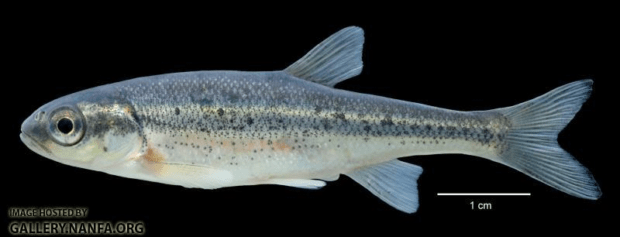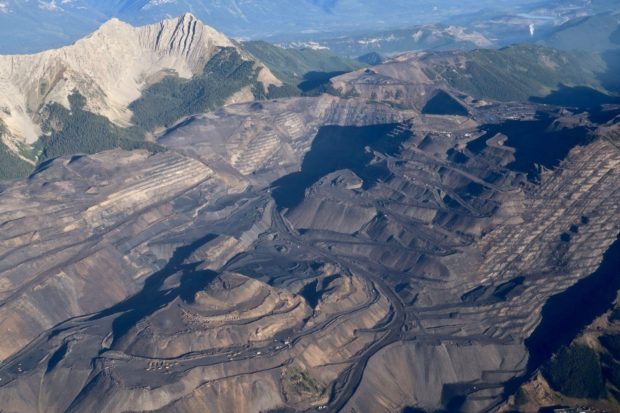We have much more to do and your continued support is needed now more than ever.
Q & A: An Interview with Erin Sexton
Getting a Bird’s-eye View of the British Columbia Mines that Threaten U.S., Tribal and State Waters and Wildlife
The National Wildlife Federation recently sponsored EcoFlights over the transboundary watersheds of British Columbia, Montana and Washington to give reporters and stakeholders a bird’s-eye view of the threats that British Columbia mines pose for U.S. watersheds. (You can read the reporters’ stories in the Missoulian and the Flathead Beacon).

Erin Sexton, a senior scientist at the University of Montana, Flathead Lake Biological Station, was onboard the flight that departed from Montana. For the past 15 years, she has been studying aquatic ecology and mining impacts in the transboundary rivers shared between the U.S. and Canada.
She spoke to the National Wildlife Federation’s Mary Jo Brooks about what she observed and why the Teck Mines in British Columbia pose such a threat to U.S., Tribal and state waters, fish, and wildlife. (Interview has been edited for length and clarity).
Q: How did the landscape you saw this time compare to the last time you flew over the Elk River Valley?
Sexton: The last time I flew over the Elk Valley was in 2009. I haven’t done a comparison of aerial photos from those trips, but the sheer scale and footprint of the mines have increased significantly over the last decade. For example, in the Upper Elk and Fording Rivers, the northernmost mines (Greenhills and Fording River) have expanded to become a mega-mine, where the individual mines have grown into one massive mining footprint. That location is also the site of Teck’s proposed Fording River Mine Expansion, which in reality is an entirely new mining footprint, and would become the largest open-pit coal mine in Canada.
Q: Why are these mines problematic?
Sexton: There’s a legacy problem of historical mine contamination that has not been addressed, and yet new mines are still being proposed These mines have been growing on the landscape over many decades and because of the way the mines work, there’s continual leaching of contaminants from the mine infrastructure.
We’re just starting to realize the damage that has been taking place for many years in our watersheds. That historical piece is important because it bears on decisions as Teck moves forward with expansion.
Permitting and regulation of those mines is the purview of the Province of British Columbia and to some degree the Canadian federal government. Despite the fact that the mine contamination is transported into the US, Montana, Idaho, and Tribal territories, governments, and communities downstream are excluded from the decision-making process.
These mines are not even in compliance – meaning that they are not meeting the water quality objectives that the province has set for them. Currently, Montanans are outside the process of regulation and management of the mines even though these contaminants are impacting U.S. waters and lands, Tribal communities, our fish, and possibly our wildlife.
Q: What kind of impacts?
Sexton: The toxin that has received the most attention is selenium. It’s very prominent in the geology underlying the mines in BC. We don’t have selenium underlying our geology in Montana, and so the selenium contamination of the Kootenai watershed is entirely sourced from Teck’s Elk Valley mines.
Selenium is part of the coal-bearing rock in the Elk Valley and when they dynamite the rock, selenium is exposed to air and water. Selenium is a particularly challenging contaminant to deal with because it bioaccumulates and biomagnifies in the food web. After it goes into the water, it goes into the sediments and algae and then is taken up by insects. And then whatever eats those insects, like trout, the selenium goes into their tissue, as well. Because of this, the impacts of selenium can be magnified as it moves through the food web.

It bioaccumulates at different rates in different species. Some species are more sensitive to selenium than others. It’s showing up in large amounts in tissue for several species of fish. The levels found in peamouth chub, redside shiner, and Weslip cutthroat trout have been exceeding the EPA threshold for toxicity. Selenium can cause deformities or mortality in those species.
Q: Has there been a decline of fish populations because of selenium?
Sexton: Given the levels of selenium in fish tissue, especially in their reproductive tissue, it is one of our highest priorities to determine whether fish populations are declining due to mining impacts. In the Upper Fording River in the Elk Valley, there was a 95% decline in westslope cutthroat trout, downstream of the mines. In Koocanusa Reservoir and the Kootenai River, the Kootenai Tribe, states of MT and ID, and the federal entities are all focusing in on selenium impacts to fish. We already have selenium levels in fish we don’t want. While we can’t say that it is definitive, there are a lot of red flags.
Q: Teck mine is doing some mitigation for selenium in Montana. Is it working?
Sexton: It’s important to have verified data. So far we haven’t had access to the data about water treatment. Looking at the scale of the mines, Teck should be doing massive mitigation and that’s not happening. We have these huge volumes of contaminated rivers and it doesn’t match the scale of mitigation.

That’s why the new mining proposals are so troublesome. We really need to see the science that shows the current mitigation is having an impact. The company is supposed to stabilize and reverse contaminant trends, but there’s no evidence those trends have been stabilized or reversed. We don’t have any evidence that mitigation is working.
Q: What do you think is the root cause of this challenging situation?
Sexton: I’ve come to think that the Elk Valley is the poster child of the broken regulatory system of the province of British Columbia. The BC government hasn’t responded in a way that you would expect to see when the data shows such concerning trends, and they don’t seem to show much will to protect the environment from mining impacts. There’s been a loss of diversity across the aquatic food web. And the mines are still allowed to proceed, and even to expand. It is very unfortunate to be downstream of the regulatory system of British Columbia. And that’s a problem we Montanans share with Washington, Idaho, and Alaska.
This watershed is at a crossroads right now. Not only is Teck trying to expand the largest mine in the watershed – which would create the largest coal mining footprint in North America – but there are another five non-Teck mines that have been proposed in the Elk Valley.
So we’re at this decision point. Do we continue to mine for steel-making coal? Or do we turn our attention to addressing the damages we know to exist and do all we can to prevent more contaminants from entering that watershed and work toward restoring the legacy damages and stewarding healthy watersheds?





















